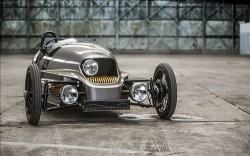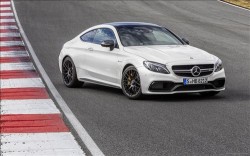Skoda Wallpapers & Pictures
 A car is a beautiful product that integrates the
expertise of many professions. To make one takes a great deal of joint
effort, diligence, and hard work of engineers, designers, technicians,
artists, and workers.
A car is a beautiful product that integrates the
expertise of many professions. To make one takes a great deal of joint
effort, diligence, and hard work of engineers, designers, technicians,
artists, and workers.
Škoda has been making automobiles for a long
time. Telling its history is like telling the story of the world’s
motoring. Few companies (only 4 in the world) may boast of 100 years of
know-how and experience in car design and manufacture.
It all
began in 1895 with 2 young men joining efforts to make bikes and
motorbikes in a family business named Laurin & Klement. By 1905,
Grandfather Automobile appeared on the scene.
The initial phase of automobile manufacture was
a story of success from the very start. In 1925, following merger with
Škoda Pilsen, the company enjoyed enormous progress, producing
beautiful vehicles with many fine details and breaking records at
international competitions.
The boom slowed down only after the
outbreak of WWII, followed by a period of socialism, yet the factory
managed to keep up with the West. In 1991, Škoda Auto ties onto the
past and reenters global markets under the wings of the VW Konzern.
Years
of research and constant progress led to production of unique
automobiles that satisfy customers’ high aesthetical and technical
requirements.
Family Enterprise Laurin & Klement
The
story begins at the end of 1895. Václav Laurin, a mechanic, and Václav
Klement, a bookkeeper, both enthusiastic bikers, take up making their
own bicycles, naming them – proudly and patriotically – Slavia.
Things develop very well for them. By 1899, Laurin & Klement Co. begins to manufacture of motorcycles. First victories in international competitions are celebrated.
At the break of the century, the company makes another major move setting itself up for manufacture of automobiles.
Grandfather Automobile 1905
Already the first automobile, Voiturette A, was a commercial success, thus becoming a symbol of Czech veteran motoring. Thanks to its know-how and experience, the company soon took up a stable position in the evolving global markets. Laurin & Klement helps reinforce the position of the Bohemian Kingdom as the industrially strongest land in the Austro-Hungarian Monarchy.
1907 – Laurin & Klement, Joint-stock Enterprise
The expansion begins to outgrow the size of a family business. It is time to take the next step. In 1907, the founders transform L & K into a joint-stock enterprise. Progress leads to a new model – Faeton. After 1914, the company take part in arms production.
Merger with Škoda Pilsen in 1925
In
order to strengthen and retain its position and modernize its factory,
L & K searches for a strong partner. By now, it makes trucks,
buses, aviation engines, and agricultural machines, in addition to
cars.
In 1925, the L & K merges with the country’s largest industrial enterprise, Škoda Pilsen. This is the end of Laurin & Klement and beginning of Škoda as a brand name. The result is assemply-line production of elegant automobiles, adorned with many fine details, and winning international competitions.
The Great Depression slows down Škoda’s progress but does not stop it. Another successful model, Populár, appears.
The Occupation Era
During
the hard years of WWII, Škoda becomes part of Third Reich's economic
system. Its production program is trimmed to make room for wartime
production.
Despite complex problems, Škoda manages to produce yet another distinguished model – Škoda Superb.
Socialism and Planned Economy
The
end of WWII brings more change. All industry is subject to central
planning. Contact and information exchange with abroad are obstructed,
while the West continues to develop. Renamed as AZNP Škoda, national
enterprise, it becomes a monopoly in personal cars in Czechoslovakia.
Successful Models of the 1950’s and 1960‘s
Thanks
to a solid base, traditional manufacturing processes, and successful
past, the Czechoslovak of the socialist post-war period managed to
progress, despite the impact of the social system and information
vacuum.
New models - Tudor, Spartak, and Octavia - appear. However, with the arrival of new technologies in the West, during the 1960’s, the country’s industry begins to fall behind.
After Prague Spring in 1968/69
From the 1970’s, the economic system begins to stagnate. The factory manages to retain its leading position in the eastern market only. A breakthrough comes in 1987 with the launch of a new vehicle - Favorit.
Transformation of Škoda
Political
changes in 1989 bring along new economic and market reality. Škoda
seeks a strong foreign partner as it essential to catch up and invest
into future.
In December 1990, the government opts for cooperation with the VW Konzern. On April 16, 1991, Škoda joins VW, Audi, a Seat as the Konzern’s fourth brand.
Further progress follows. Due to this cooperation and new economic thinking, Škoda implements extensive modernization measures. The result is Felicia, a model able to withstand global competition. More successful models follow - Octavia, Fabia, and the company’s pride, Škoda Superb.
Views: 11394
[Source: Skoda ]
Latest Wallpapers
Following is the list of recent pictures updates on our site.
DieselStation Social















